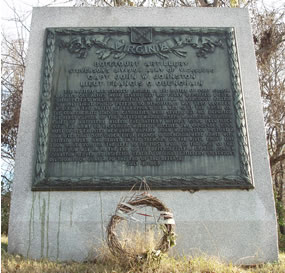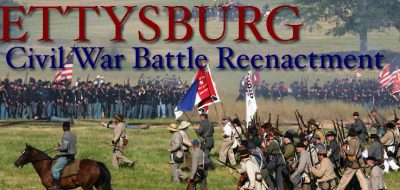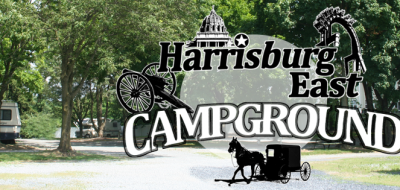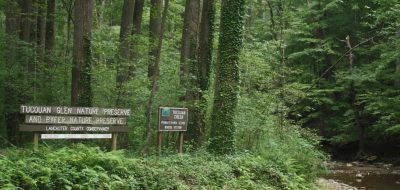 In a recent post, “Wacky Question of the Week,” I shared a few examples of the amazing questions park rangers receive on the job. The subject of those queries isn’t limited to the out-of-doors, and historical sites have their own collection of legendary inquiries.
In a recent post, “Wacky Question of the Week,” I shared a few examples of the amazing questions park rangers receive on the job. The subject of those queries isn’t limited to the out-of-doors, and historical sites have their own collection of legendary inquiries.
Here are a few samples, along with a little commentary for clarification.
“Were any of the scenes from the movie Gettysburg filmed during the actual battle?” (That would have been a bit difficult, since Thomas Edison didn’t develop the motion picture camera until 1891, almost thirty years after the battle was fought.)
This next one has been asked so many times that it provided the title for a book. The question–and the title: How Come They Always Had the Battles in National Parks? (Boy, I bet the visitors in the picnic area and campground were seriously annoyed by all that shooting, yelling and other commotion!)
Once the dust has settled, the site of almost any battle is eventually commemorated with a monument. That term may conjure up a variety of pictures in your mind, from the 555-foot Washington Monument in our nation’s capital to a small chunk of granite, or something in between.
Perhaps no other event in our nation’s history can top the Civil War in terms of promoting the building of monuments. Erected after the end of the war, these memorials honor personnel from entire states, various military units and even individual soldiers. They come in all shapes and sizes, in styles ranging from the grandiose to the modest, and in numbers that occasionally make one marvel that there is any unused granite remaining in North America.
Lest you think I exaggerate, here are a couple of examples: Vicksburg National Military Park contains 1,330 historic monuments and markers, and Gettysburg has over 1,400 such items. They are certainly fitting reminders of the sacrifices of brave men and women, but the presence of all those monuments prompts some interesting questions to rangers. One of my favorites is “Did the soldiers hide behind the monuments during the battle to keep from getting shot?”
Other visitors duly note the fine condition of these memorials and wonder, “Where did they store the monuments during the battle so they wouldn’t be damaged?” (I hope at least one of the approaching armies was considerate enough to send word ahead and give the appropriate authorities time to move those monuments to a safe spot.)
Some of us have a hard time keeping historical events in their proper sequence, as confirmed by a story from Fort Point National Historic Site in California.  Fort Point is one of those hidden gems that many people miss during a visit to San Francisco, but it has a fascinating history and spectacular views. Constructed between 1853 and 1861 to prevent entrance of a hostile fleet into San Francisco Bay, the brick fort is the only one of its kind on the west coast.
Fort Point is one of those hidden gems that many people miss during a visit to San Francisco, but it has a fascinating history and spectacular views. Constructed between 1853 and 1861 to prevent entrance of a hostile fleet into San Francisco Bay, the brick fort is the only one of its kind on the west coast.
Fast forward to1933, when construction began on the Golden Gate Bridge. Some accounts say that initial plans for the bridge called for Fort Point to be demolished, but thankfully, the span was redesigned to allow for preservation of the historic fort. That decision also provided the opportunity for a question overheard at a ranger talk at Fort Point.
Perhaps the visitor asking this question missed some of the facts about the age of the fort, or assumed that the Golden Gate Bridge predated the Civil War. In either case, the question of the week during the ranger’s talk was, “Why did they build a fort underneath the Golden Gate Bridge?”
Unlike the chicken and the egg, the sequence of events for the fort and bridge is thoroughly documented, but I’m willing to bet that inquiry has come up more than once. I trust that in our current era rangers successfully bite their tongues and resist giving what would admittedly be a great reply: “It’s part of the Homeland Security system.”
Perhaps you’ve overheard a few “Monumental Mix-ups” during your travels. Feel free to share them in the comment box below!
Jim Burnett
Life – it’s an adventure…. Find something to smile about today!
This story is adapted from the books Hey Ranger! True Tales of Humor and Misadventure from America’s National Parks and Hey Ranger 2, © Jim Burnett and Taylor Trade Publishing, used by permission.





Jim Burnett
Ron – your story about the Samuel Clemen’s home was wonderful – and from what I can infer about him from his writing, “Mark Twain” would love this tale.
A quote from Twain would fit this situation nicely: “It is better to keep your mouth closed and let people think you are a fool than to open it and remove all doubt.”
Thanks for sharing this with us!
Ron Butler
Great stories. We heard a great one from a tour guide at Samuel Clemmen’s home in Hartford Conn. Sometime into the tour she asked “who is this Samuel Clemmens? I thought this was Mark Twains home!”
I suspect that he could have had a lot fun with that one!
Jim Burnett
Gary –
Thanks for the nice comments. I’ll plan to share the story about what happens with Hollywood meets History in a future post on the blog!
Gary Hauck
I have read both of Jims books and exchanged emails with him. I highly recommend everyone reading the books. You will laugh till your sides hurt. Jim if you get the chance tell the people about your tour in Virginia and what the people were asking about the movie Pochahontas, If that doesnt make you laugh nothing will. GH
Jim Burnett
Fred and Steve –
Thanks for the stories!
I’m sure at one time or the other almost all of us have asked questions that amuse the locals, but some are worth sharing for the smile value.
Steve
Last time I was in Banff National park In British Columbia.
I was talking to one of the rangers and someone asked one of the silly questions after they left I asked what was the worst one they got..
They told me about the lost lakes..
The Rockies has a lot of spring run off. So they have these things they call lost lakes and some of the bigger or more regular ones on mapped but most are not..
When dry they just look like a small meadow and you can hardly tell it’s lower the the ground around and they only fill for a few days or weeks each spring..
Well they use to get people asking how many are there..
they got tired of explaining that there are temporary and there really isn’t anyways to could them and thats why they are called Lost lakes..
It never worked..
So now if someone asks the rangers how many lost lakes there are they get told Seven..
Which seems to satisfy most people.
Sadly that was the polite story they told me..
They had lost of shocking ones..
Fred
In the summer of 1972, I worked in Yellowstone National Park. One Sunday afternoon, a group of us employees were standing watching tourist when a lady approached us and asked, ” Is Old Faithful still origional or is it now fake?” One of our guys told her that the park service paid an employee overtime on Sundays to turn the water on and off. Naturally, we had to leave, laughing !!!!!!
Jim Burnett
Doug –
Thanks for sharing some great comments!
Jim
Doug Smith
Years ago while in a pavillion overlooking Bryce Canyon NP, we heard someone telling a ranger about a deer she saw. She said, “…and he spread his antlers and just took off!” Someone else asked how they got the rocks colored so bright, to which the ranger replied that they spray paint them from a helicopter.
Happy Camping!